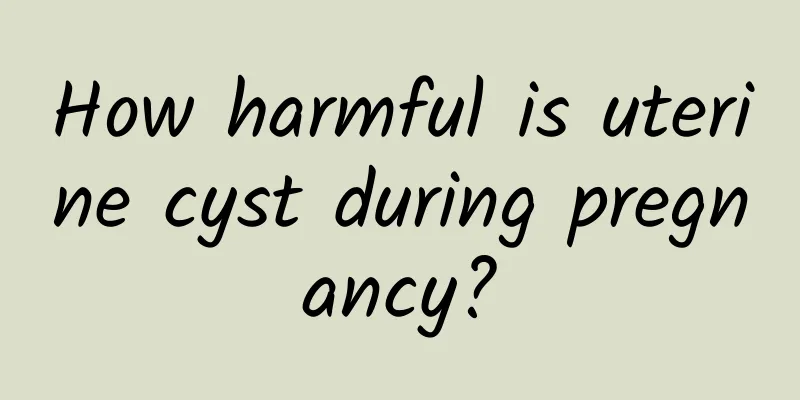Introduction to the three most common symptoms of uterine fibroids

|
Clinically, the symptoms of uterine fibroids are relatively complex. Understanding and recognizing the symptoms of uterine fibroids is very important for the treatment of uterine fibroids, which can help patients receive treatment more correctly. What are the common symptoms of uterine fibroids? The following is a brief introduction to the common symptoms of uterine fibroids. In general, common symptoms of uterine fibroids include: 1. Increased menstruation It is the most common symptom of uterine fibroids, which mostly occurs in submucosal and intramural fibroids, and manifests as menorrhagia, prolonged menstruation or irregular vaginal bleeding. The main causes of this symptom of uterine fibroids are: the area of the endometrium increases, the endometrium proliferates due to the effect of estrogen, the fibroids hinder the contraction of the uterus, and affect the blood circulation, causing the endometrium to become congested. Due to long-term bleeding, patients often have varying degrees of anemia. 2. Compression symptoms If the fibroids located in the lower part of the uterus and the cervix are incarcerated in the pelvic cavity, they can compress the pelvic tissues and nerves, causing lower abdominal pain and back pain, which are symptoms of uterine fibroids. If the fibroids grow forward or backward, they can compress the bladder, urethra or rectum, causing frequent urination, dysuria, urinary retention or constipation. When the fibroids grow to both sides, they form broad ligament fibroids, which can compress the ureters and cause hydroureteral or renal pelvis; if they compress the pelvic blood vessels and lymphatic vessels, they can cause lower limb edema, which are symptoms of uterine fibroids. 3. Pain The symptoms of this type of uterine fibroids are relatively rare. In addition to the pain caused by compression of the pelvic nerves, the pedunculated submucosal fibroids cause uterine contractions in the uterine cavity and produce pain. When the fibroids block the cervical canal and hinder the outflow of menstrual blood, it can cause symptoms of dysmenorrhea. When the pedicles of pedunculated subserosal fibroids are twisted or when the uterine fibroids become red or infected during pregnancy, they can cause more severe abdominal pain. The above is an introduction to the common symptoms of uterine fibroids. I hope it will be helpful to everyone. Once the symptoms of uterine fibroids appear, you must go to the hospital for treatment in time to avoid missing the best time for treatment. |
<<: Experts explain the health care of candidal vaginitis
>>: Common causes of irregular menstruation
Recommend
How does Traditional Chinese Medicine treat cervicitis symptomatically?
Cervicitis is a very common problem in gynecology...
What to check for cervicitis
Cervicitis is a common gynecological disease. If ...
What is the reason for thin people to get uterine fibroids? Will uterine fibroids shrink if people lose weight?
What is the reason for thin people to get uterine...
How can women prevent pelvic effusion in their daily life?
How can women prevent pelvic effusion? In our cli...
Just 4 minutes to make you sweat and burn fat all over your body! Champion coach: 7 benefits of TABATA high-intensity exercise
If you want to burn fat quickly and get rid of ob...
What are the symptoms of left lateral adnexitis?
What are the symptoms of left lateral adnexitis? ...
Is dysmenorrhea the same as adenomyosis?
As women's life pressure increases, the proba...
Classification and symptoms of cervicitis
Cervicitis is a common disease among women of chi...
What is the cause of pelvic effusion and what issues should we pay attention to?
Pelvic effusion is a common gynecological disease...
Several typical symptoms of uterine fibroids
Clinically, uterine fibroids are also called uter...
How to prevent hyperprolactinemia from lifestyle habits
Hyperprolactinemia can also affect women’s reprod...
Which hospital is good for treating cervical warts?
Which hospital is good at treating cervical warts...
What is the situation of irregular menstruation and yellow leucorrhea
Irregular menstruation and yellow leucorrhea may ...
Does low progesterone injection cure abortion?
Many pregnant mothers are very worried when they ...
Menstrual health exercises can effectively relieve dysmenorrhea
In addition to conventional clinical treatments, ...









